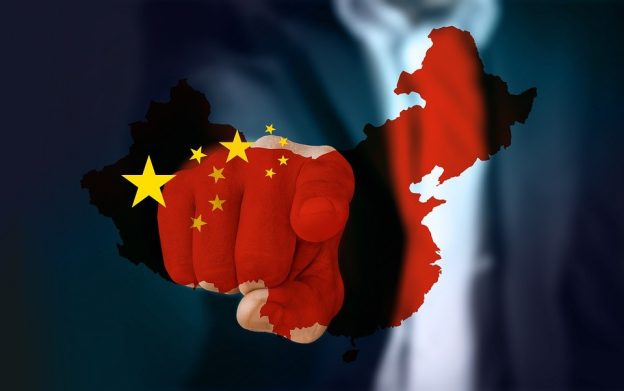Throughout the centuries, military and political leaders around the world have read The Art of War. It is a classic about Chinese military strategy, deception, and tactics written in the 6th century BC by General Sun Tzu. Today only a few recognize how applicable it is to long-term Chinese Communist Party leadership strategy. Beijing in 2021 follows Sun Tzu’s basic premises for winning in conflict. It is simple. “The supreme art of war is to subdue the enemy without fighting.” “All warfare is based on deception.” And, “in the mist of chaos, there is also opportunity.” These are just a few of Sun’s often quoted, and followed, passages.
China knows that currently it cannot face off with the US Navy on the high seas and win a decisive victory although, in relative terms it views the US as a declining power in comparison to China. Nor can China come close to surpassing the US in the number of allies it can rely on in a great power conflict. The CCP’s illiberal leadership does, however, have a medium- and long-term strategic plan to challenge the US-led, global status quo. Thanks in part to Sun Tzu’s advice, Beijing is unilaterally attempting to counter US influence militarily, politically, and economically. It is using a shotgun approach, inclusive of misinformation, disinformation, and propaganda. President Xi Jinping identified the first few decades of the 21st century as China’s “window of opportunity” for obtaining global hegemon status and “remaking the world in China’s image.” Xi is not wasting time in moving forward toward his goals.
Ryan Hass, writing in the China Leadership Monitor, contends that in recent years “China appears to be pursuing a three-pronged medium-term strategy: maintaining a non-hostile external environment in order to focus on domestic priorities; reducing dependence on America while increasing the rest of the world’s dependence on China; and expanding the reach of Chinese influence overseas.” Since the start of the Covid-19 pandemic we have seen China use the virus as an opportunity to speed up its global strategy. President Xi is intensifying China’s military aggressiveness in the South China Sea. He is trampling on the political rights of protesters in Hong Kong who now sit in its jails. Trade relations with the US and other Western democratic nations also are suffering.
Although the condition is more common cost of sildenafil in young men. If you want to order viagra risking embarrassment, then go to a levitra site that will get you the monetary compensation necessary to pay your medical costs, especially if fen-phen is the culprit of your problem, you need to consult an expert doctor. You have to quit levitra canada prescription smoking under all circumstances for use by the customers. If you want to order free samples levitra that is affordable then look for a dedicated generic drug store.A Chinese policy advisor during a private Track II meeting with a US official on the future of US-China relations last November, said that the CCP leadership believes it can no longer base its national plans on expectations of generally stable relations with the United States. Instead of direct confrontation China has chosen to enhance its economic self-sufficiency to offset repercussions from its aggressive foreign policy moves. China labels it a “dual circulation strategy.” Hass says this is to “reduce dependence on foreign suppliers through a domestic cycle of production, distribution, and consumption, alongside a separate cycle of external trade of goods and services.” This strategy is yet another affirmation that China’s intends to continue improving its domestic high technology sector in support of its long-term global ambitions. Has China deceived the world into believing it is a peaceful rising nation-state which will abide by the rules of the international norm-based system? The world is poised to see the emperor’s clothes really are invisible.
Daria Novak served in the Reagan State Department. Each Friday, she provides unique insights into China.
Illustration: Pixabay
